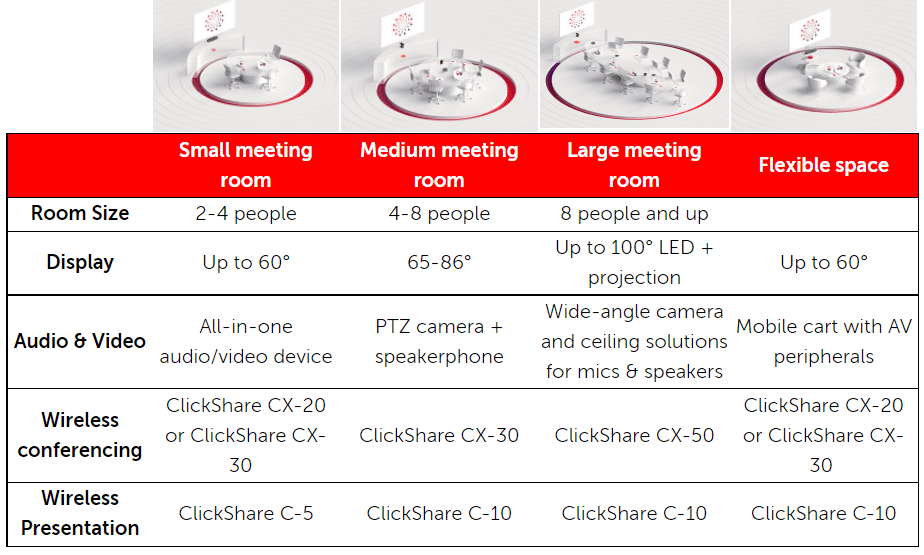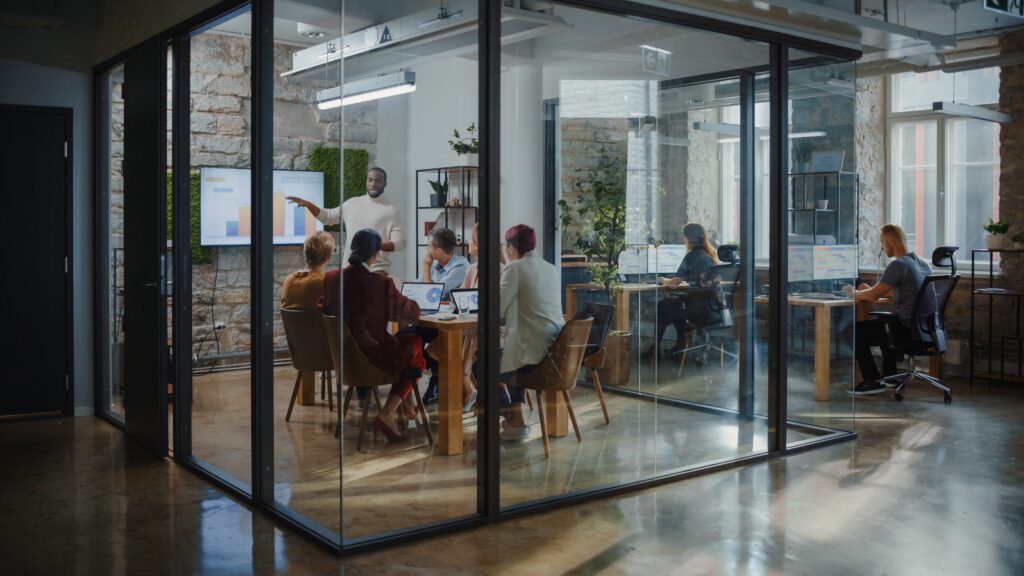Conferencing is in the middle of unprecedented growth in use and popularity. Conferences are a great way to bring people and teams together. Whether you’re in a hybrid work model or in-office, meeting in person is tremendously valuable for maintaining good relationships and boosting productivity. Having an effective conference setting allows everyone to meet in one place and have a positive experience.
Conference rooms are usually arranged in such a way that they provide a comfortable and professional atmosphere for your staff and guests, with all the necessary technical equipment needed for the smooth running of the meeting. This means conference room furniture is often designed to allow different layouts and setups to cater to different purposes and numbers of attendees in as many different environments as possible (to meet any requirement).
So, are you planning a business meeting or conference, or are you thinking of getting one for your office? Here’s everything you need to know about creating the best possible setup for your meeting room.
The Most Common Conference Room Setup Styles
There is much more to setting up a meeting room than simply putting out chairs. The type of meeting room you will be hosting and the number of people attending should dictate how you set up the room. The most common conference room setup styles include:
- Boardroom style: There are two main ways to arrange the furniture for a boardroom style. The traditional way is to have the table in front of the chairs so that everyone faces the same direction. The other option is to place chairs around a large rectangular table, with people sitting at each side. This can be used for smaller meetings and when there is no need for a large group.
- Auditorium: The auditorium style places chairs along the walls facing a podium or stage in the middle of the room. This type of setup works best when there are people who will not be participating in discussions but rather observing. Audience members can take notes on clipboards or laptops if they are available during presentations and breakout sessions.
- U-shape: U-shape setups are often used when there are many participants who need to interact with each other during meetings or discussions. This arrangement allows all participants to be involved in conversations and discussions without standing up and walking around too much during each session.
- Banquet: Banquet setups allow for more privacy than traditional conference room designs because they separate people into smaller groups instead of having them all together.
Well, if you’re planning a meeting or conference, you want to make sure that the setup is suitable for the room and the occasion.
Which solution fits your meeting room?

Solution: Barco ClickShare
Learn more about creating a seamless wireless conferencing for small to medium-sized meeting and conference rooms.
1. Small Conference Rooms or Huddle Spaces
If you’re like most of us, you spend a good chunk of time in meeting rooms and conference rooms. And for those who don’t work from home, these small meeting rooms or huddle spaces can easily be mistaken for your office. Typically, these are private offices with a whiteboard, flip chart, or dry erase board.
A small conference room is a perfect place to host team meetings, brainstorming sessions, and other events where you’re likely to have a small group of people in one place at one time. They hold around five people and are often bookable on-demand or per-use. They’re also a great way to provide privacy for smaller meetings with clients or customers.
Whether you’re planning on using your conference room for something small like a one-on-one meeting or something much bigger like a monthly team meeting, you should set up the small meeting room correctly, so no one feels uncomfortable or distracted.
2. Medium Conference Rooms
Medium-sized rooms are ideal for meetings with eight or more people. Ensure there’s enough space for everyone to sit comfortably at the table, plus enough space behind them to move around freely during discussions without disturbing the rest of the group. If possible, try to place chairs around the room’s perimeter so that participants can easily access any documents or materials they need during a meeting without disturbing others who might be seated closer to the center of the room.
A medium conference room is the most versatile type of conference room available and can be used for anything from large groups to small groups and one-on-one meetings. These rooms should have enough space for everyone to sit comfortably but not so much space that it feels awkward or overbearing during smaller meetings.
3. Large Meeting Rooms
Large conference rooms or boardrooms are perfect for larger groups who need more space than what a medium-sized room offers but would like additional privacy. These rooms are typically used for significant events, such as company meetings, product launches, or training sessions.
This type of setup is great if you have a lot of people attending meetings. It can be used as a boardroom by fitting in extra seats, or it can be used as a training room by installing whiteboard walls or screens with projectors.
If you have a large conference room, you can afford to be more flexible. You can set up tables with chairs around them or use round tables for groups of six or less. If you need more than one table, make sure they are set up at different heights and not facing each other – this will encourage conversation and collaboration. If there’s a projector or screen, consider placing it in the center of the room so all participants can see it easily.
4. Flexible Spaces
If you don’t have the luxury of having an entire conference room to yourself, consider using easily moved tables. This will allow you to change the layout depending on who is attending the meeting or what type of activity is being held.
Flexible spaces are ideal for smaller groups who want more privacy than what’s offered by large conference rooms or open office spaces.
Conclusion
With these four general setups, you can get started on making the most of your meeting room space. The biggest takeaway here, of course, is that you’re going to want to think carefully about your room’s setup and what can realistically fit there. But at the end of the day, the right solution for you and your organization depends on your goals for each meeting and how many people will be gathering.
In general, as long as you keep these factors in mind as you plan meetings, you should be able to create excellent conference room setups that everyone gets excited about!
VSGi has been offering top-notch AV technology solutions to give people unrivaled audiovisual experiences for more than 30 years. You may also count on us to do the same for your conference rooms. Contact us today!

